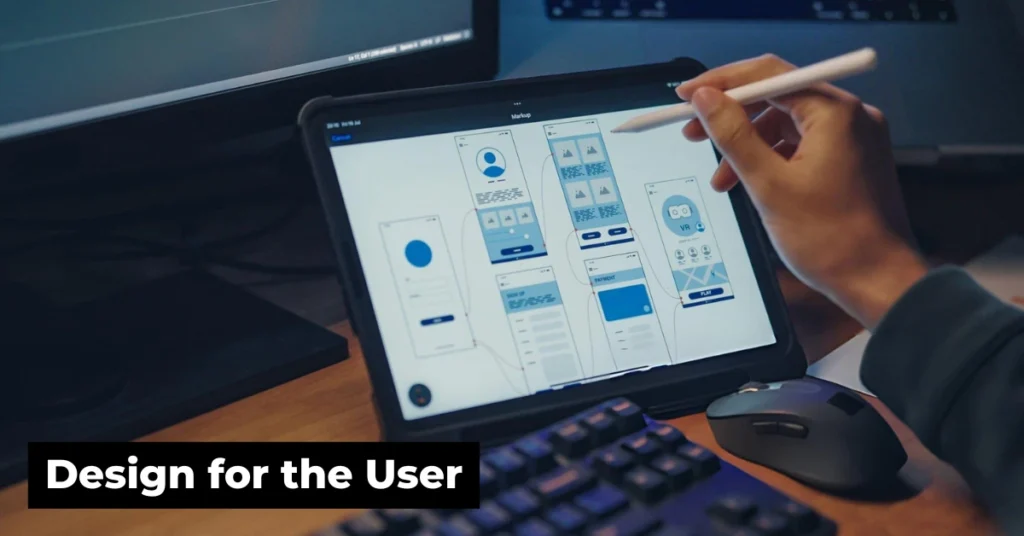Mobile apps are everywhere, but not all of them offer a smooth experience. Some apps feel effortless to use, while others are frustrating enough to make users delete them within seconds. What makes the difference? Mobile app UI/UX plays a huge role. A well-designed app feels natural, intuitive, and enjoyable. A poorly designed one? Confusing, frustrating, and forgettable.
Understanding user experience design is essential for creating an app that people actually want to use. Here are the 10 must-know UI/UX design principles that help create mobile apps that users love.
Design for the User – Not for Yourself
A common mistake in mobile app UI/UX is designing based on personal preferences instead of real user needs. Users do not think like developers or designers. They just want an app that works smoothly without requiring too much effort.

This is where usability testing services come in handy. Testing an app with real users helps identify pain points early on. The goal is to make the app so intuitive that users do not need a tutorial to figure it out. If an app needs instructions just to perform basic tasks, something has gone wrong.
Also Read, Top Benefits Of Hiring UI/UX Designing Services Provides In The USA
How to Apply This Principle:
- Observe how real users interact with the app.
- Identify areas where they hesitate, struggle, or get confused.
- Make adjustments based on real feedback, not assumptions.
Keep It Consistent – No Surprises
It’s confusing to use an app where every screen has a different font, color, or button style. User experience design relies heavily on consistency. Users expect similar patterns throughout the app. If they learn how to use one part, they should be able to apply that knowledge everywhere.
A consistent mobile app UI/UX makes navigation easier, builds familiarity, and reduces cognitive load. In short, it makes life easier for users.
How to Apply This Principle:
- Use the same colors, fonts, and button styles across the app.
- Keep navigation elements in familiar places.
- Stick to common design patterns that users already understand.
Simple Navigation – No One Likes Getting Lost
A great app lets users find what they need without thinking too hard. Confusing menus, unclear icons, and hidden options lead to frustration. If users struggle to navigate, they will leave.
Good usability testing services can help identify where users get stuck. The goal is to make navigation so effortless that users do not even have to think about it.
How to Apply This Principle:
- Use clear labels for buttons and menus.
- Avoid unnecessary clicks—users should reach their goal quickly.
- Test the app with people who have never used it before and see if they get lost.
Make It Work on All Screens – Responsive Web Design Matters
Mobile devices come in different screen sizes, from tiny smartphones to large tablets. If an app does not adapt well, some users will have a poor experience. Responsive web design ensures the app looks and works great on any device.
Apps that do not adjust properly lead to problems like buttons being too small, text being hard to read, or layouts breaking. A mobile app UI/UX should be seamless regardless of the screen size.
How to Apply This Principle:
- Design with flexibility so the app adjusts to different screens.
- Test the app on multiple devices before launching.
- Ensure text, buttons, and images scale properly.
Also Read, Key Elements of an Effective Custom UX Design Strategy
Speed is Everything – No One Likes a Slow App
A few seconds of delay, and users are already annoyed. Slow apps drive people away, no matter how great the user experience design looks. Performance optimization is just as important as visual appeal.
Apps that load quickly feel more responsive and reliable. Usability testing services can identify performance bottlenecks before users start complaining.
How to Apply This Principle:
- Optimize images and animations to reduce loading times.
- Use efficient coding to keep the app lightweight.
- Avoid unnecessary features that slow things down.
Less is More – Avoid Clutter
An overloaded app with too many buttons, pop-ups, or features can be overwhelming. A clean, simple design helps users focus on what matters.
Simplicity is key in user experience design. Users should not feel lost in a sea of options. A well-structured layout with clear priorities improves mobile app UI/UX dramatically.
How to Apply This Principle:
- Remove unnecessary features that do not add real value.
- Keep the design clean and easy to scan.
- Guide users toward the most important actions without distractions.
Touch-Friendly Design – Make Every Tap Count
Mobile apps rely on touch gestures. Small buttons, cramped layouts, and poorly placed interactive elements lead to misclicks and frustration. Mobile app UI/UX should be optimized for touch interaction.
Usability testing services help pinpoint areas where users struggle with tapping, swiping, or scrolling. Smooth interactions create a pleasant user experience design.
How to Apply This Principle:
- Make buttons large enough to tap easily.
- Keep enough space between elements to prevent accidental taps.
- Test the app on different screen sizes to ensure a smooth touch experience.
Make Call-to-Actions Clear and Obvious
A call-to-action (CTA) tells users what to do next—whether it is “Sign Up,” “Buy Now,” or “Get Started.” If CTAs are not clear, users will hesitate or abandon the app.
An effective mobile app UI/UX makes CTAs stand out. They should be easy to find, well-designed, and placed strategically.
How to Apply This Principle:
- Use contrasting colors to make CTAs stand out.
- Keep the text simple and direct.
- Position CTAs where users naturally look.
Accessibility – Design for Everyone
Not all users interact with an app the same way. Some may have visual impairments, mobility issues, or other disabilities. A good user experience design is inclusive.
Designing for accessibility improves usability for everyone. Features like voice commands, readable fonts, and high-contrast text make an app more user-friendly.
How to Apply This Principle:
- Ensure good color contrast for readability.
- Use text alternatives for images.
- Make the app compatible with screen readers.
Also Read, The Future of Mobile App Development: A Beginner’s Guide
Continuous Improvement – Never Stop Testing
No app is perfect at launch. User expectations change, and technology evolves. Regular testing and updates keep the mobile app UI UX fresh and relevant.
Usability testing services help identify areas for improvement. The best apps are those that continuously refine their user experience design based on feedback.
How to Apply This Principle:
- Regularly gather user feedback.
- Fix issues and optimize performance based on testing results.
- Keep improving the app even after release.
Final Thoughts
A great mobile app UI/UX does not happen by accident. It takes careful planning, continuous testing, and a focus on user experience design. Whether it is responsive web design, performance optimization, or accessibility, every detail matters.
Virtual Oplossing specializes in creating seamless user experience design solutions that make apps not just functional but enjoyable to use. Investing in usability testing services ensures that users have the best possible experience.
Copyright: All rights reserved. Unauthorized reproduction or distribution of any content on this site is prohibited. For permissions, please contact info@virtualoplossing.com.

